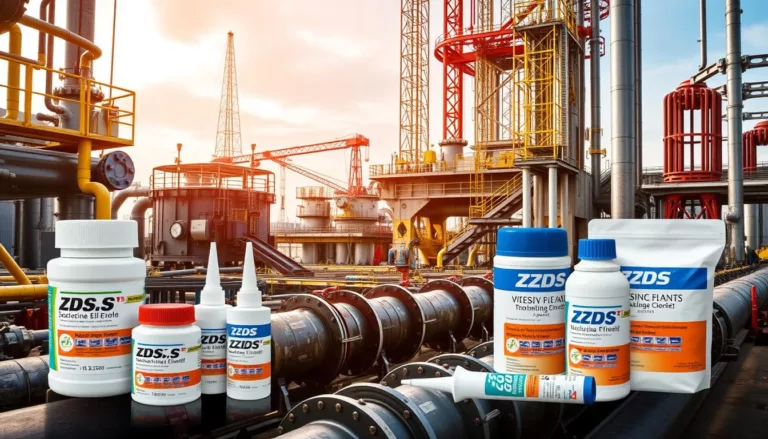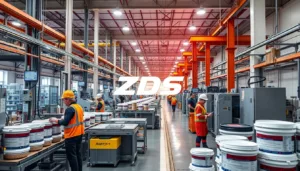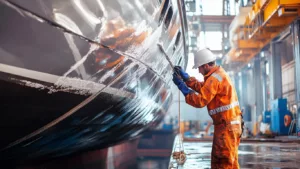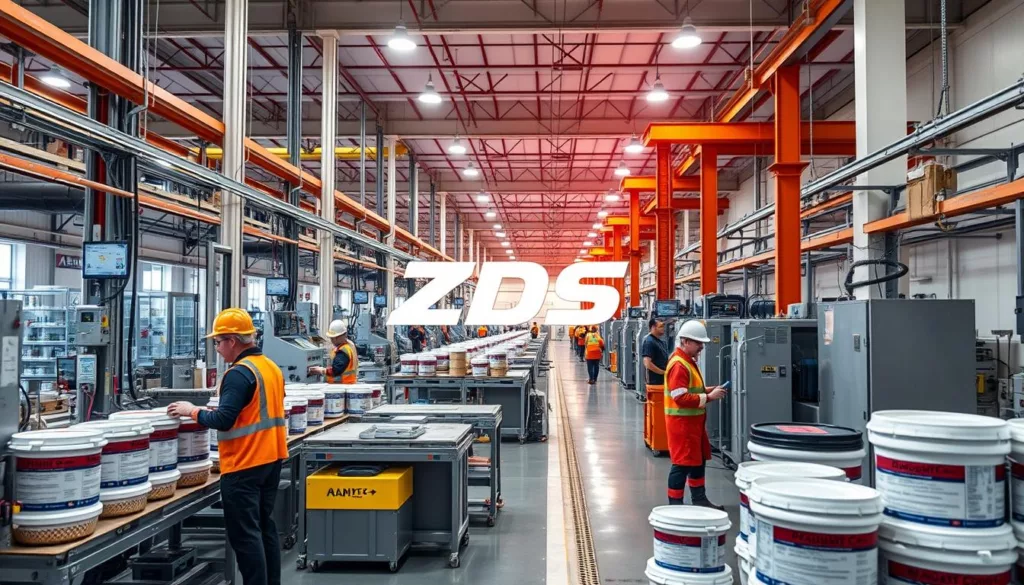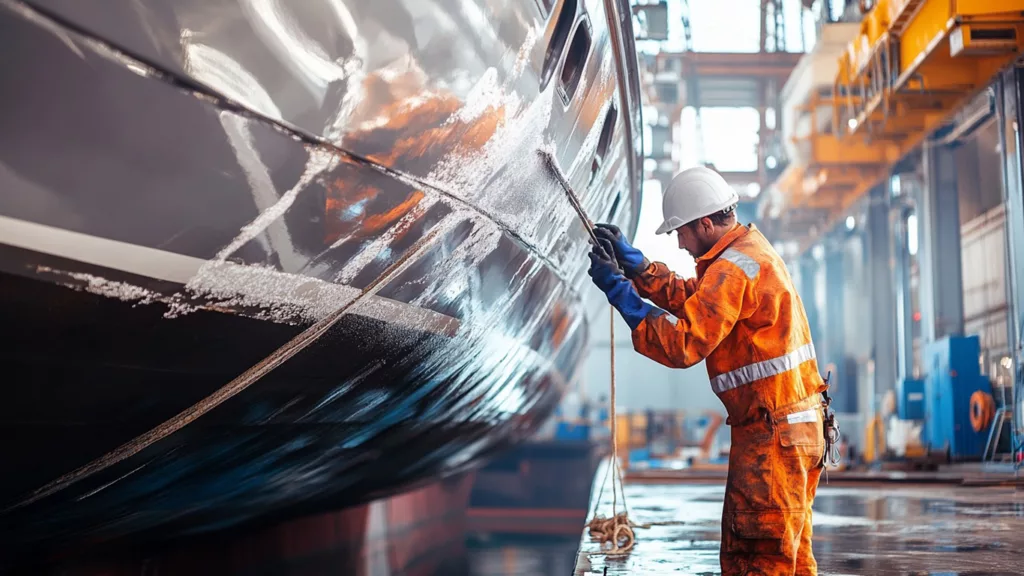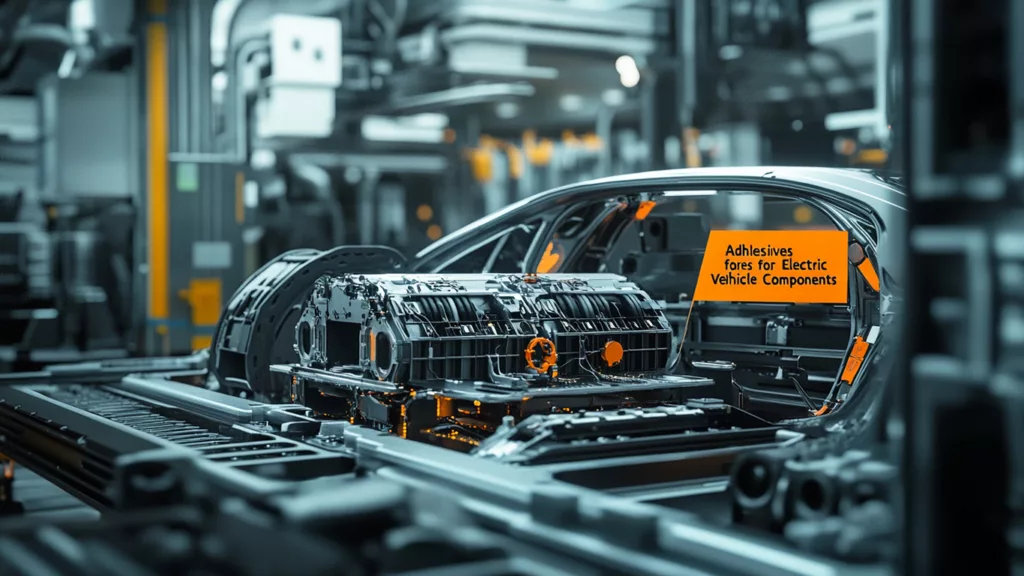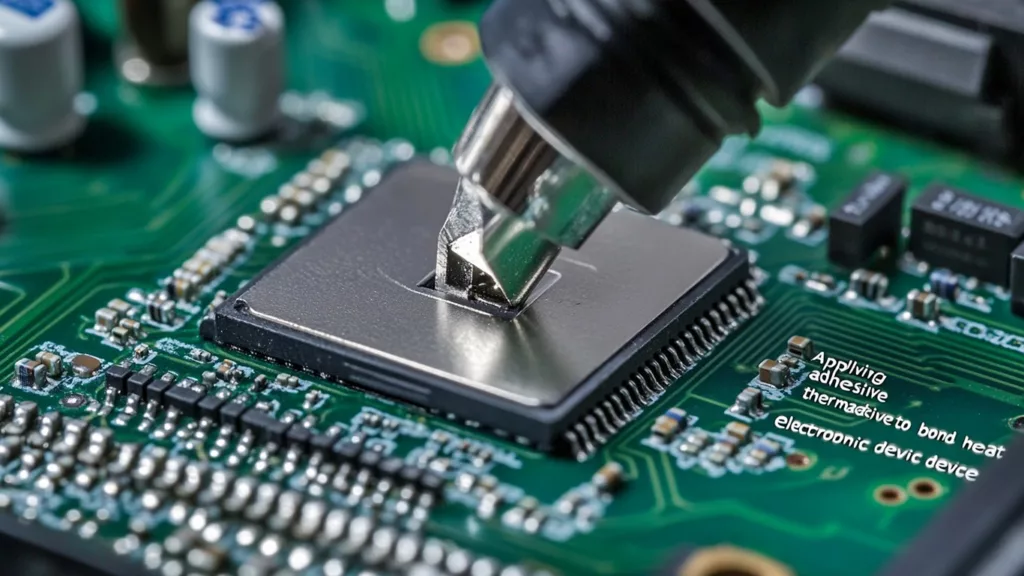In the oil and gas industry, adhesives play a vital role in maintenance. They help bond parts together strongly, making sure infrastructures like pipelines and storage tanks last longer. This guide will show how knowing about adhesives can make maintenance better. It helps keep operations running smoothly and cuts down on delays.
We’ll look at the different adhesives used and their benefits. We’ll also talk about how to choose the right one and the new advances in adhesive technology. By understanding the importance of adhesives, professionals can make better choices. This ensures the oil and gas systems are more durable and reliable.
Key Takeaways
- The importance of adhesives in enhancing the longevity of petroleum infrastructure.
- Types of adhesives suitable for various applications in the oil and gas industry.
- Criteria for selecting the right adhesive based on specific maintenance needs.
- Innovations in adhesive technology contributing to improved efficiency.
- Best practices for effective application techniques in infrastructure maintenance.
Introduction to Petroleum Infrastructure Maintenance
Maintaining petroleum infrastructure is crucial for safety and efficiency. The importance of adhesive bonding in infrastructure is huge. It helps in reducing risks of equipment failure and downtime. Good maintenance can extend the life of assets. It also improves performance in tough conditions.
Importance of Maintenance in the Petroleum Sector
Proactive maintenance is key in the petroleum industry. It ensures equipment and structures work well continuously. Regular check-ups and repairs keep things safe and within regulations.
Strong adhesive bonding helps protect against wear and damage. Advanced adhesives bring great benefits of adhesives in maintenance. They make repairs smooth and boost system performance.
Common Challenges in Infrastructure Maintenance
Maintenance in the petroleum industry has its hurdles:
- Equipment corrosion due to harsh environmental exposure
- Material fatigue impacting structural integrity
- Logistical constraints in remote locations
These issues make maintenance tough. But, adhesives offer solid solutions. They play a key role in maintenance tasks. To learn how adhesives tackle these challenges, visit ZDS Chemical for industry best practices.
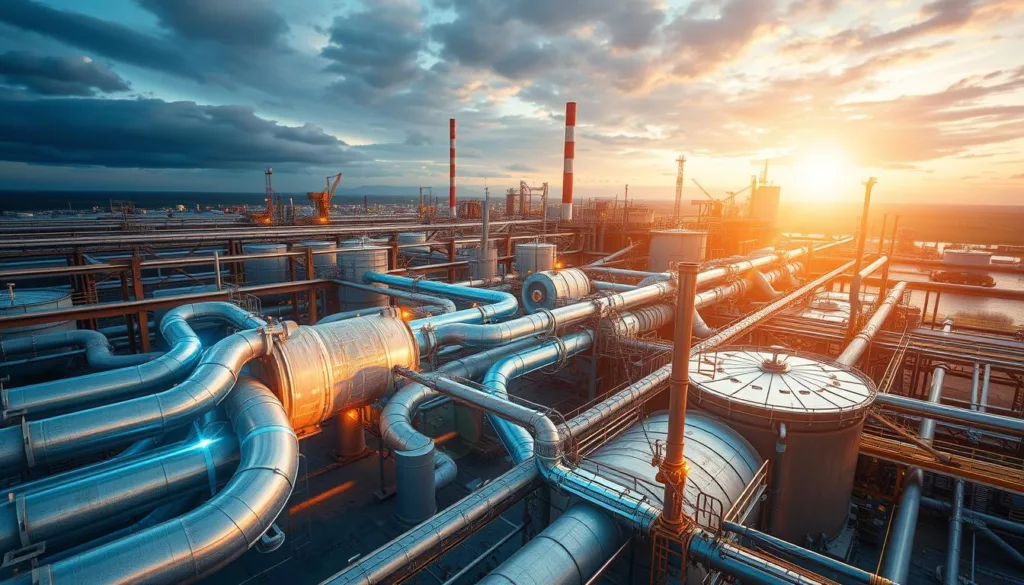
Types of Adhesives Used in Petroleum Applications
Choosing the right adhesive is crucial in the petroleum industry. It ensures the infrastructure lasts longer and is reliable. There are different types of adhesives. Each has its own benefits. Knowing these can boost performance in maintaining pipelines and more.
Structural Adhesives
Structural adhesives are strong and durable. They are perfect for reinforced bonding in pipeline work. These adhesives bond strongly and can handle heavy weights and environmental stress. They play a big role in keeping infrastructure solid.
Pressure-Sensitive Adhesives
Pressure-sensitive adhesives are easy to use and flexible. They bond quickly without heat or extra steps. They work well for both temporary and permanent jobs. This makes tasks easier and faster, especially in the petroleum field.
Polyurethane Adhesives
Polyurethane adhesives are great against chemicals and water. This makes them a solid choice for tanks and pipelines. They keep liquids out very well. Their strength extends the life of key petroleum parts.
Benefits of Using Adhesives in Infrastructure Maintenance
Using adhesives for infrastructure upkeep brings many benefits, especially in efficiency. It makes things cost-effective and more durable, which is key in the petroleum industry.
Cost-Effectiveness and Efficiency
Adhesives help save money by reducing the need for welding. This cuts labor and material costs, enabling better resource use. They also make the maintenance process quicker. This means repairs are done faster, reducing downtime.
Improved Durability and Lifespan
Adhesives boost the durability of infrastructure in the petroleum field. They help structures last longer by fighting off harsh conditions. By protecting against wear and corrosion, adhesives improve efficiency and cut costs over time.
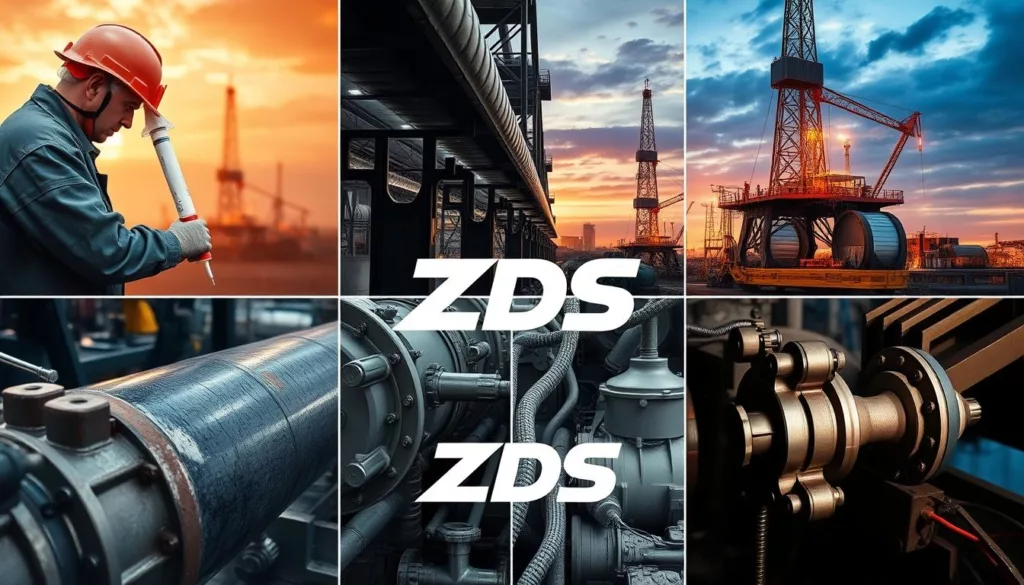
| Benefit | Description | Impact |
|---|---|---|
| Cost Savings | Reduced labor and material costs through efficient bonding methods. | Increased budget flexibility for other projects. |
| Operational Efficiency | Streamlined processes reduce downtime during repairs. | Higher productivity levels overall. |
| Durability | Resistance to environmental factors extends the lifespan of structures. | Long-term cost reduction due to lower maintenance needs. |
| Corrosion Protection | Adhesives protect against corrosive materials in the petroleum sector. | Ensures integrity of critical infrastructure. |
Adhesive Selection Criteria in Petroleum Maintenance
Choosing the right adhesive for petroleum maintenance is vital. It helps keep everything running smoothly and safely. There are several factors to think about during this process. These include how well the adhesive can handle environmental conditions, its compatibility with different materials, and how it performs under tough situations. Grasping these points makes adhesives more effective in petroleum maintenance.
Environmental Resistance
Adhesives need to be tough against environmental challenges. They must resist:
- Moisture
- Chemicals commonly found in petroleum products
- Temperature fluctuations
Adhesives that can handle these issues stay effective longer in maintenance tasks.
Adhesive Compatibility with Substrates
To bond well, adhesives must work with a variety of materials, including:
- Metals
- Plastics
- Composites
Ensuring the adhesive matches the material ensures a strong bond. This is crucial in maintaining petroleum infrastructure.
Performance under Extreme Conditions
In the petroleum industry, equipment often faces harsh conditions. It’s important to check how adhesives perform when facing:
- High pressure
- Fluctuating temperatures
Choosing adhesives that can hold up under these tough conditions ensures they’ll last in maintenance work.
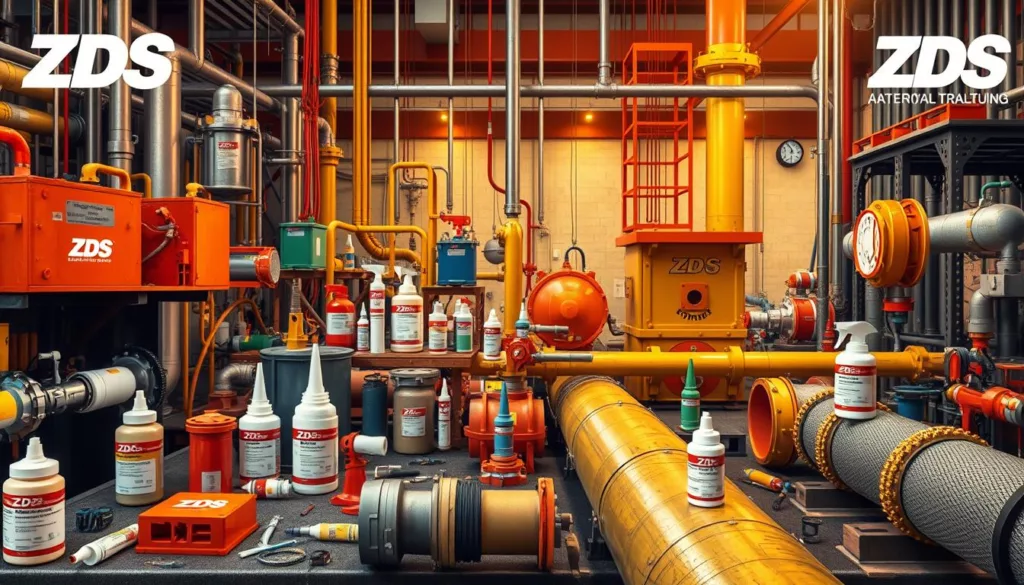
Application Techniques for Adhesives in Petroleum Infrastructure
Using the right methods to apply adhesives is key for top performance in petroleum setups. Paying close attention throughout this process can really make a difference. It helps in making things last longer, particularly when using adhesives in oil refineries.
Surface Preparation
Getting the surface ready is key for a strong bond. Clean it first to take off any dirt, grease, or other stuff. Making the surface a bit rough further helps the adhesive stick better by giving it more area to hold onto.
Curing and Setting Times
Knowing how long adhesives take to set is crucial for planning. Each type has its own timing, affecting how work flows. It helps ensure the adhesive is strong enough before you proceed.
Quality Control Measures
Having strong checks in place means adhesives will be more reliable. Checking regularly and testing can catch problems early on. Doing this makes sure adhesives keep performing well, avoiding future issues in oil refineries.
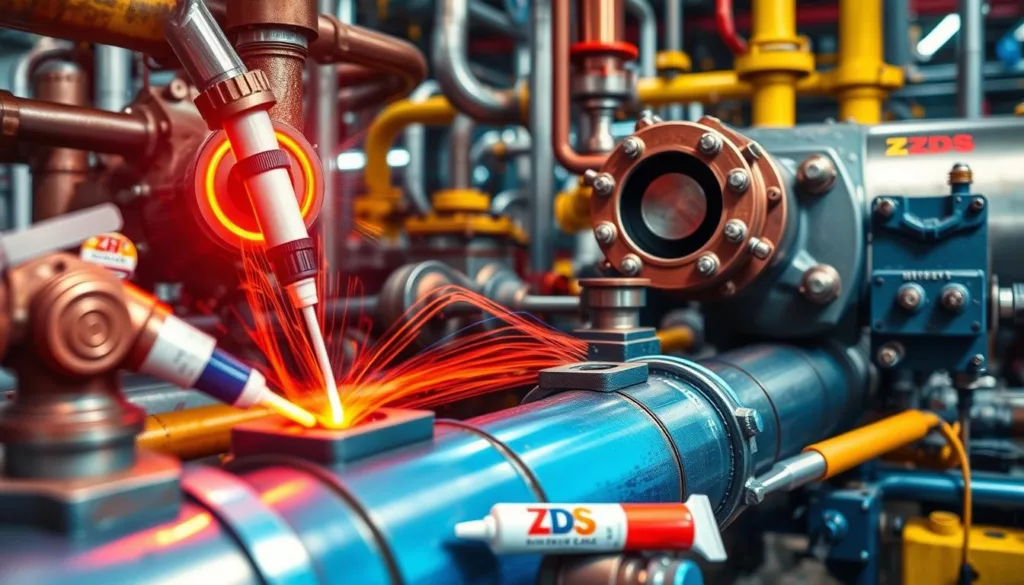
Case Studies: Successful Adhesive Applications
Studying successful adhesive uses gives us insight into their value in the oil and gas sector. These case studies show how adhesives lead to great results in pipeline and storage tank upkeep.
Pipeline Repair and Reinforcement
A major pipeline operator faced big wear and damage from environmental stress. Traditional repairs would have shut it down for a long time. But they chose to use special adhesives for the job instead.
These adhesives sealed and strengthened the damaged areas, cutting downtime a lot. This case shows how the right adhesives can make pipelines last longer and work better.
Storage Tank Maintenance
In another case, a storage tank had problems with corrosion and leaks. They used adhesives made for the oil and gas industry to seal up the tank. This fixed the leaks and protected the tank.
Thanks to these adhesives, the tank stayed safe and met industry rules. This highlights the important part adhesives play in keeping storage systems safe.
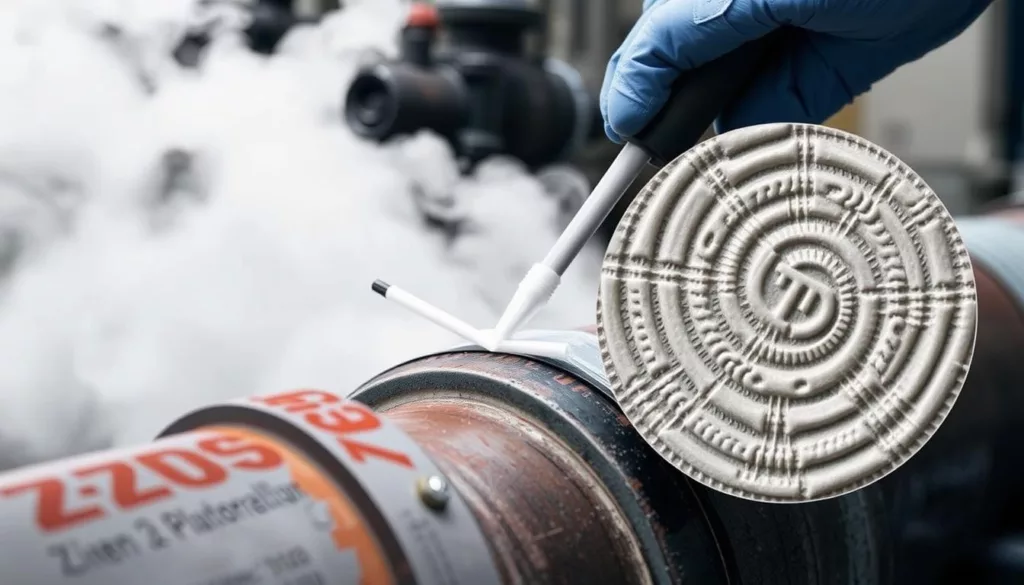
| Application Area | Challenge Addressed | Adhesive Benefit |
|---|---|---|
| Pipeline Repair | Severe wear and environmental damage | Minimized downtime and extended pipeline life |
| Storage Tank | Corrosion and leakage | Ensured safety and compliance |
The Environmental Impact of Adhesives
Today’s petroleum industry must understand the environmental impact of adhesives. These adhesives, particularly those for corrosion protection, bring many benefits. However, we must also consider their environmental effects. We’ll look at eco-friendly adhesives and talk about waste management practices to lessen potential hazards.
Eco-Friendly Adhesive Options
Some manufacturers focus on making adhesives that are better for the environment. These eco-friendly adhesives have fewer volatile organic compounds (VOCs) and use renewable resources. For instance, plant-based polymers are becoming more popular. They stick well and are more eco-friendly. By choosing these alternatives, the petroleum industry can become more sustainable.
- Water-Based Adhesives: These are preferred because they are less toxic and easier to dispose of, leading to safer work environments.
- Bio-Based Adhesives: Made from natural materials, they offer a safer option without compromising on how well they work.
- Solvent-Free Adhesives: These produce fewer harmful emissions, making them a good choice for the environment.
Waste Management Practices
It’s important for industries to dispose of adhesives responsibly to support environmental sustainability. They should have solid waste management practices. This means safely getting rid of adhesive materials and, if possible, recycling them.
- Begin by conducting a waste audit to see what kinds of adhesive waste there are and how much.
- Try to start a recycling program to save valuable materials.
- Teach employees the right way to handle and dispose of adhesives to lower the risk of contamination.
By choosing eco-friendly adhesives and following good waste management practices, the petroleum industry can become more sustainable. This way, it can still use adhesives for corrosion protection effectively.
Innovations in Adhesive Technology
The world of adhesive solutions for petroleum maintenance is always changing. This is because people want better performance and efficiency. New adhesive technologies are being developed with better formulas and ways to monitor them. These new solutions are designed to meet the unique needs of the petroleum industry. They provide strength and reliability for many uses.
Advances in Adhesive Formulations
Latest improvements in adhesive formulas bring products with amazing bonding, flexibility, and ability to handle environmental challenges. These advancements include:
- High-performance polymers that stand up to high heat and chemicals.
- Rapid curing adhesives that make maintenance quicker and easier.
- Improved adhesion agents that work well with tough surfaces like metals and composites.
Smart Adhesives for Monitoring
Adding smart technology to adhesives is changing how we maintain petroleum systems. These smart adhesives have sensors. They can check on the structure’s health and give real-time updates on:
- Temperature changes that might affect how the adhesive works.
- Stress and strain levels that could signal possible problems.
- Humidity and exposure to chemicals to help with upkeep.
Regulatory Standards for Adhesives in Petroleum
In the petroleum industry, following adhesive regulations is key for safety. These rules cover how adhesives are made, labeled, and used. It’s critical for manufacturers and users to understand these standards.
Overview of Relevant Regulations
Important rules for adhesives in the petroleum sector include:
- Material Safety Data Sheets (MSDS): These sheets offer important details on adhesive properties, dangers, and handling safety.
- Labeling Requirements: Proper labels must list ingredients, hazards, and safety steps. This is crucial for meeting rules.
- Environmental Regulations: It’s mandatory to follow local and national laws on pollution and hazardous waste.
Compliance and Safety Measures
To meet adhesive standards in the petroleum industry, companies need strict safety actions. They should:
- Training Personnel: Regular training helps staff use adhesives safely and effectively.
- Regular Inspections: Routine checks ensure safety rules are followed and find issues early.
- Proper Disposal Methods: Correct disposal of adhesives reduces environmental harm and meets regulations.
For top adhesive solutions, ZDSpoxy is a trusted source. They offer many products that comply with petroleum adhesive standards. Learn more about their offerings here.
Future Trends in Adhesive Use in Petroleum
Looking into the future, the adhesive market in the petroleum sector is poised for big changes. Advances in technology and industry needs will shape new adhesive products and applications. This evolution is expected to bring groundbreaking developments.
Growing Demand for Sustainable Solutions
Environmental concerns are more important than ever. The petroleum industry is searching for adhesives that are kinder to the environment. They are looking at biodegradable materials and formulas that lower emissions of harmful compounds.
Businesses are choosing eco-friendly adhesives. This meets regulations and what customers want. It’s part of a larger move towards greener practices across different fields.
The Impact of Technological Advancements
Adhesive technology progress is key to better performance in maintaining petroleum infrastructure. Improved adhesive chemistry will allow for stronger bonds. This will make infrastructure more reliable and longer-lasting.
There’s even talk of smart adhesives that can monitor their condition. Such innovations might change how maintenance is done. Ongoing research promises new solutions that will fulfill current needs and foresee future issues.
Conclusion
This guide has highlighted the importance of adhesives in petroleum infrastructure upkeep. We talked about different types of adhesives, their special features, and the benefits they bring. These benefits include making maintenance processes more durable and efficient. It’s crucial to pick the correct adhesive. Choices include water-based, solvent-based, or hot melt. The right selection ensures strong bonds that can handle the tough conditions in the petroleum industry.
Summary of Key Points
When we pick adhesives carefully—thinking about how they resist the environment, work with various materials, and perform under tough conditions—we can reduce maintenance challenges. We’ve pointed out common errors and shared the best ways to apply adhesives. Our goal is to equip industry experts with the knowledge and tools they need. This way, they can use adhesives effectively in their projects, leading to better maintenance work everywhere.
The Future of Adhesives in Petroleum Infrastructure Maintenance
The use of adhesives in maintaining petroleum infrastructure is expected to grow. This growth is thanks to technological progress and a greater focus on sustainability. By adopting the newest innovations, we can improve our maintenance strategies. This includes following environmental regulations and promoting green practices. As we face future challenges, it’s vital to embrace state-of-the-art adhesive technologies. These technologies will help increase durability and efficiency in our field. For more advice on selecting adhesives, check out this in-depth resource. It offers valuable tips and insights for choosing the right adhesive for your needs.
FAQ
What is the role of adhesives in petroleum infrastructure maintenance?
Adhesives are key to making petroleum infrastructure last longer and work better. They are used for fixing pipelines, fighting corrosion, and making structures stronger. This ensures that oil and gas industry assets stay safe and reliable.
What are the benefits of using adhesives in the oil and gas industry?
Using adhesives saves money and makes things last longer. They make it unnecessary to use old-fashioned ways of joining things, which cuts labor and material costs. Adhesives also fight off corrosion and handle tough environments well.
What types of adhesives are commonly used in petroleum applications?
The petroleum field often uses structural, pressure-sensitive, and polyurethane adhesives. These adhesives are chosen for their strength, flexibility, and resistance to chemicals. They meet the varied needs of maintenance work.
How do I select the right adhesive for petroleum maintenance projects?
Choosing the right adhesive means looking at how well it withstands moisture and chemicals, if it works with the materials being joined, and how it performs in extreme conditions. Think about issues like high pressure and big temperature changes.
What application techniques should be followed for adhesives in petroleum infrastructure?
The right way to apply adhesives includes getting surfaces ready, knowing how long they take to cure, and checking the quality of the bond. These steps make sure adhesives work their best and last a long time.
Can you provide examples of successful adhesive applications in petroleum maintenance?
Sure, adhesives have helped fix pipelines quickly without stopping work for too long. They’ve also kept storage tanks from corroding and leaking. These successes show how effective adhesives can be in maintenance.
What is the environmental impact of adhesives used in the petroleum industry?
Adhesives affect the environment, so it’s important to choose ones that are less harmful but still work well. It’s also crucial to manage waste properly to ensure safe disposal and recycling of adhesive materials.
What new innovations are emerging in adhesive technology for petroleum maintenance?
New advances include stronger and more flexible adhesives. There are also smart adhesives that let us monitor their condition in real-time. This helps spot problems early and maintain integrity.
What regulatory standards govern the use of adhesives in the petroleum industry?
The use of adhesives must follow safety data sheets, labeling rules, and environmental laws. Following these standards helps handle adhesives safely and reduces risks.
What future trends can we expect regarding adhesives in petroleum infrastructure maintenance?
We’ll see more demand for eco-friendly adhesives and new chemical advancements. These trends aim to lower environmental harm and make maintenance easier and more effective in the oil and gas industry.

